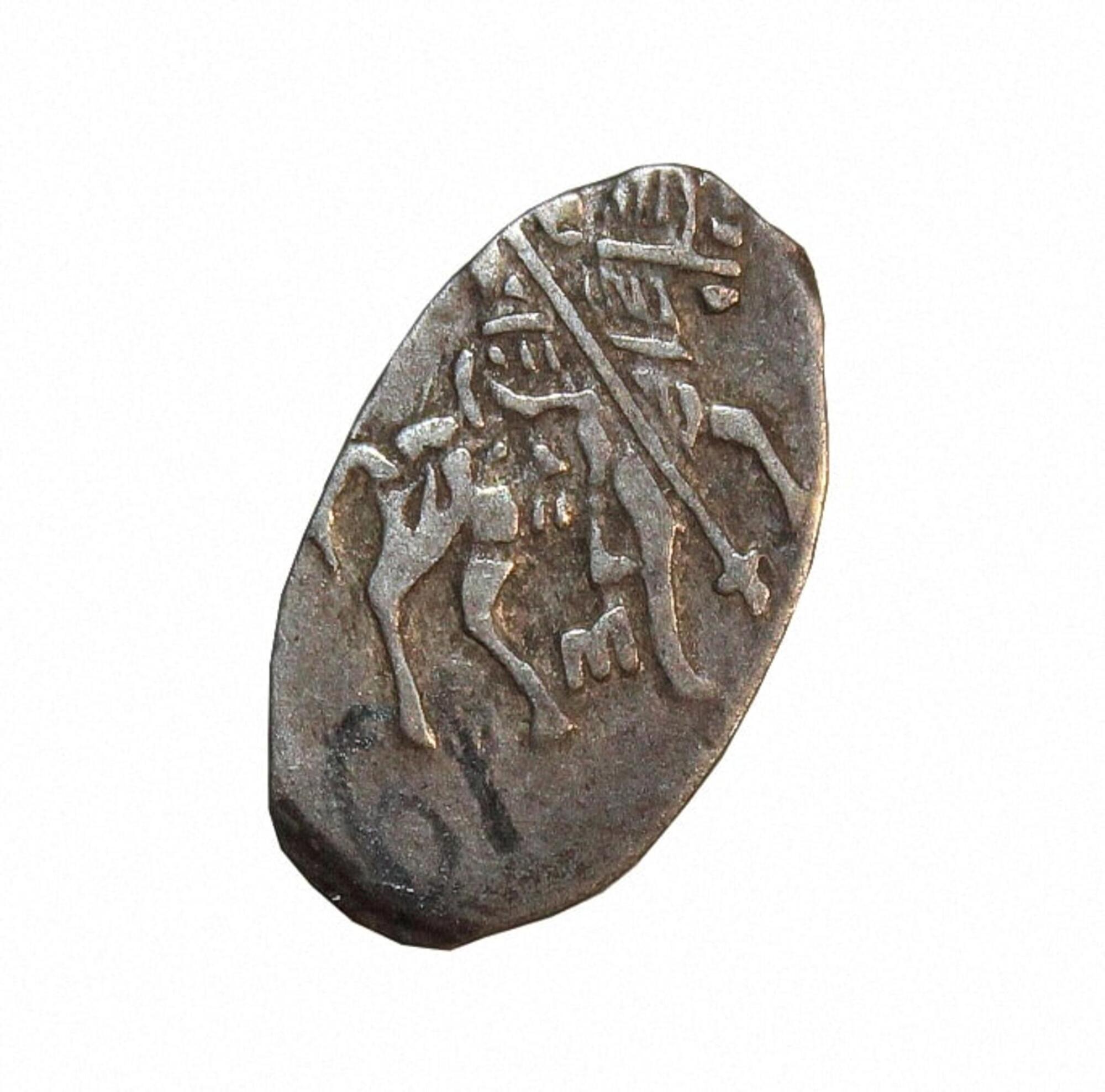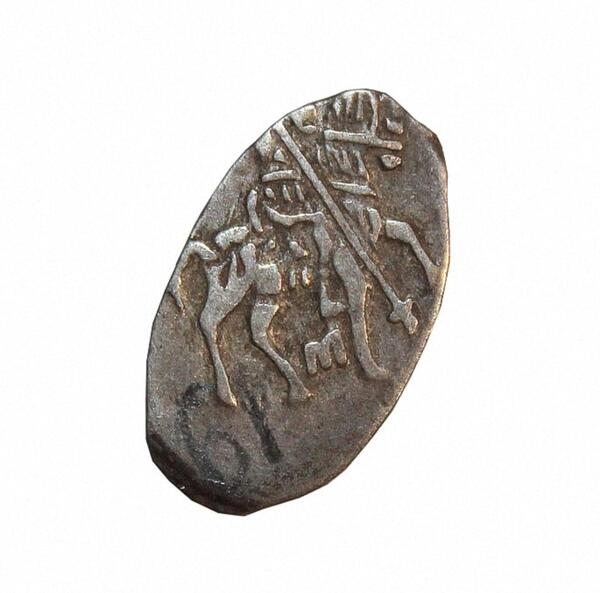The museum’s collection houses seven old treasure troves. Four of them consist entirely of silver coins, two only contain copper coins, and one includes both copper and silver coins.
As a rule, treasure troves are hidden when society is experiencing severe social or economic disruption — during wars, changes of power, repressions and other situations in which the owners of some precious possessions are far away from home or die.
This cheshuika coin was part of a 17th-century treasure trove. It was found in 2010 in the Kulizhno area of the Kargopol district — between the villages of Ozerki and Archangelo. This is one of the earliest and largest treasure troves in the museum’s collection, containing 651 silver coins and one copper coin.
Such coins were in use during the reign of Tsars Mikhail Fyodorovich and Aleksey Mikhaylovich of the House of Romanov. During the reign of Mikhail Fyodorovich, coins were issued in large quantities. Almost all 17th-century treasure troves contain some coins. Most of the coins were minted by the Moscow Mint. The treasure trove from the museum’s collection contains 383 coins of Mikhail Fyodorovich and 215 coins of Aleksey Mikhaylovich.
The obverse of silver coins shows a horseman with a spear. On the back there is a six-line inscription indicating the name and title of the Tsar: “Tsar and Grand Duke of Russia Mikhail Fyodorovich”. The coin weighs approximately half a gram.
In addition to silver coins, the treasure trove also contains one copper coin. It helped experts to determine the time period more accurately — the treasure was hidden between 1654 and 1663. The minting of copper coins began only in 1654. A pound of copper was worth 12 kopeks but was used to produce coins worth ten rubles. In the 17th century, ten rubles was considered to be quite a large sum of money. For example, a chicken cost only 1 kopek, and for ten rubles one could even buy a small herd of ten bull calves.
Copper coins were immediately put into circulation in large quantities and were viewed as suspicious by the population. It caused the devaluation of copper money and resulted in the so-called Copper Riot of 1662. A year later, the copper coin mints in Novgorod and Pskov were closed, and the government resumed the minting of silver coins. Copper coins were withdrawn from circulation and melted down for military and economic purposes.
As a rule, treasure troves are hidden when society is experiencing severe social or economic disruption — during wars, changes of power, repressions and other situations in which the owners of some precious possessions are far away from home or die.
This cheshuika coin was part of a 17th-century treasure trove. It was found in 2010 in the Kulizhno area of the Kargopol district — between the villages of Ozerki and Archangelo. This is one of the earliest and largest treasure troves in the museum’s collection, containing 651 silver coins and one copper coin.
Such coins were in use during the reign of Tsars Mikhail Fyodorovich and Aleksey Mikhaylovich of the House of Romanov. During the reign of Mikhail Fyodorovich, coins were issued in large quantities. Almost all 17th-century treasure troves contain some coins. Most of the coins were minted by the Moscow Mint. The treasure trove from the museum’s collection contains 383 coins of Mikhail Fyodorovich and 215 coins of Aleksey Mikhaylovich.
The obverse of silver coins shows a horseman with a spear. On the back there is a six-line inscription indicating the name and title of the Tsar: “Tsar and Grand Duke of Russia Mikhail Fyodorovich”. The coin weighs approximately half a gram.
In addition to silver coins, the treasure trove also contains one copper coin. It helped experts to determine the time period more accurately — the treasure was hidden between 1654 and 1663. The minting of copper coins began only in 1654. A pound of copper was worth 12 kopeks but was used to produce coins worth ten rubles. In the 17th century, ten rubles was considered to be quite a large sum of money. For example, a chicken cost only 1 kopek, and for ten rubles one could even buy a small herd of ten bull calves.
Copper coins were immediately put into circulation in large quantities and were viewed as suspicious by the population. It caused the devaluation of copper money and resulted in the so-called Copper Riot of 1662. A year later, the copper coin mints in Novgorod and Pskov were closed, and the government resumed the minting of silver coins. Copper coins were withdrawn from circulation and melted down for military and economic purposes.



